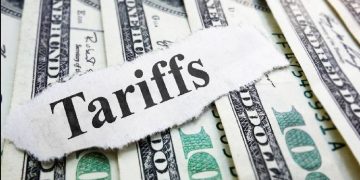New Delhi: Inflow of Chinese goods could see a rise in the October-December quarter as items worth about Rs 20,000 crore — primarily comprising electronics and electrical items, gifts, toys, footwear, home and kitchen appliances — still lie at the Indian ports waiting for clearance.
The traders and importers who had placed their orders in November and December last year are yet to receive a chunk of their consignments. The unprecedented delay in delivery is due to the shutting down of Chinese borders in January and February, followed by the coronavirus pandemic and the subsequent lockdown in India which lasted for about two months beginning March 25.
Official data reveal India’s imports from China during the April-August period of the current financial year stood at $21.58 billion-a drop of 27.63 per cent, compared to the corresponding period in the previous year.
“Chunks of orders placed by our traders in December last year are still to arrive. The goods have not yet reached as China was initially closed due to coronavirus and subsequently from March 25, India went into a stringent lockdown for about two months. So, a great deal of Chinese goods — essentially electronics and electrical items, gifts, toys, footwear, home and kitchen appliances — still lying at the ports. Thus there could be a slight increase in the inflow of Chinese goods in the coming quarter,” Praveen Khandelwal, secretary general, Confederation of All India Traders (Cait) said.
However, Khandelwal said that traders have not placed fresh orders with China for these items since March.
India’s moves to shun Chinese goods
India’s growing clamor to reduce imports from China — especially cheap electronic and electrical items including mobile phones, home appliances, gifts and toys — will deal a big blow to the dragon. While India has initiated talks with manufacturers in the other countries including Vietnam, Taiwan and South Korea besides boosting its own indigenous production to meet the demand, the boycott — China move will be hit the smaller unorganized Chinese manufacturers more.
“Losing a chunk of a huge market like India is not going to be a very happy thing for China,” an industry analyst, who refused to be identified said.
It needs to be mentioned here that the imports of raw materials have not been hit despite rising tensions between the two countries, especially after the Galwan Valley clash. These include the critical active pharmaceutical ingredients (API) required for production of medicines and other items used for such finished goods as automobiles.
In 2017-18, India’s inward shipment from China accounted for 16.4 per cent of its total import basket. In 2009-10, the figure was just 10.7 per cent. However, since then it has eased a little. In 2018-19 imports from China accounted for 13.69 per cent.
IANS






































